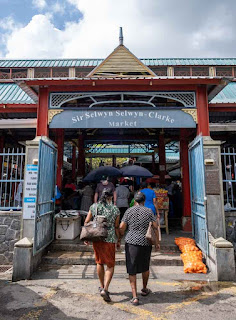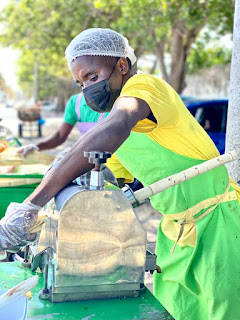Today we got two for the price of one, as we visited the neighbouring Seychelles islands of La Digue and Praslin.
Our first stop in La Digue was utterly idyllic. As we stepped off the tender in the small village of La Passe, you couldn’t have imagined a more relaxed scene, people meandering around its quiet streets on bicycles, with a backdrop of lush green hills and turquoise seas.
Our mission today was to hike the length of the island down to the secluded Grand Anse. On an island where almost everyone walks or cycles, there’s not many places in the world where as you hike along the island’s main road, you get passed by maybe ten cars or trucks at the very most. The peaceful road took us past a nature reserve, so we were constantly accompanied by the chirping of exotic birds in a tranquil atmosphere where even the stray dogs were friendly.
It was an extremely hot and humid day, but it was bliss just savouring this unspoilt environment, before our view of paradise was completed as we emerged onto the blinding white sands of Grand Anse – one of the most beautiful beaches I’ve ever been to. To confirm how romantic a spot it is, a (rather sweaty) couple were getting married up one end of it.
As we walked we couldn’t help forming a plan to spend more time here – our enthusiasm was only slightly tempered by a bumping into a couple from the ship who told us that they’d just paid $54 dollars for 2 Pina Coladas! Maybe paradise comes at a price.
In the afternoon, we called in at the slightly more developed island of Praslin, famous for being one of only two islands where the extremely rare coco de mer grows – a suggestively shaped nut (use your imagination) that has all kinds of legends attached to it (not surprisingly, most of them relate to sex).
We visited the unspoilt Vallee de Mai, a forest that’s home to thousands of swaying coco de mer trees and other prehistoric-looking flora with huge leaves and weird shapes. In this quiet forest, where the only sounds were creaking branches, rustling leaves and cooing birds – you half-expected to see a velociraptor skulking in the undergrowth.
After our time in the Garden of Eden, we moved on for some beach time on the Cote d’Or, yet another gorgeous beach of amazingly warm waters and soft sands.
I think we have found paradise!



























































